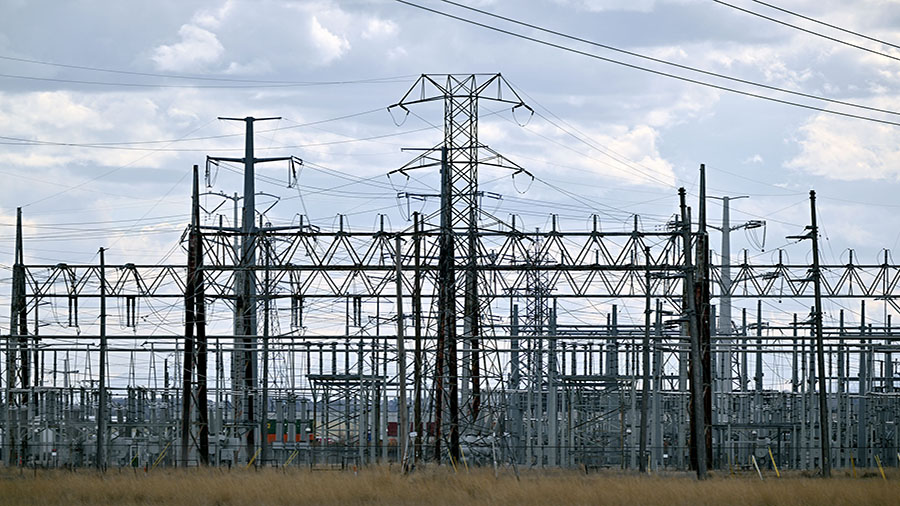Utah expected to have cheapest electricity rates in the nation this year
Mar 12, 2024, 1:46 PM

Power lines are pictured in Salt Lake City near the International Airport on Monday, March 11, 2024. (Scott G Winterton, Deseret News)
(Scott G Winterton, Deseret News)
SALT LAKE CITY — An analysis of state-by-state data collected by the federal government projects Utah will have the lowest electricity rates in the country this year, with the annual costs estimated to be $1,047.27.
This is despite experiencing a 4.5% rate increase over the last two years.
The study, conducted by electricity experts Texas Electricity Ratings, analyzed state-by-state U.S. Energy Information Administration data to predict the annual electricity bill across the country. By comparing consumer costs between November 2022 and 2023, an annual increase was calculated for each state, determining a total bill for each household.
Utah residents reportedly only paid 11.03 cents per kilowatt hour in 2023 — 1.5 times lower than the national average.
Compare that to Hawaii, which ranked the most expensive, with annual electricity costs of up to $3,450.55. The national average is $1,730.55.
Why are Utah rates lower?
Jona Whitesides, spokesman for Rocky Mountain Power, attributed the low costs to a buffet of energy options available to its ratepayers.
“We have a mixed portfolio approach that keeps the costs really low,” he said. “We are able to pull from hydro, wind, solar.”
Whitesides said that diversity is beneficial to states like Utah and Wyoming (which came in No. 2 for low costs) that have been hit with a prolonged drought.
“In the Pacific Northwest, we can pull from those hydro plants.”
He added that across the utility company’s suite of power plants, some have been converted to natural gas — a commodity that historically has been pretty cheap.
Washington made it into the top 10 for lowest electricity rates and joins Wyoming and as being part of PacifiCorp’s service areas.
The utility company did, however, file a notice of intent in January with the Public Service Commission in Utah to raise retail rates for electricity and has additional filings due next month. Those filings trigger a review and a “test period” to determine the actual need and purpose for an increase, should it happen. It typically takes months, or even into next year, to make a decision, which Whitesides said is a public process open to testimony on all sides. A rate increase, in this case to cover capital costs, may or may not happen and there have been times when the utility decides not to proceed. The “signal” to the Public Service Commission is required under Utah law. No numbers or what the percentage of the increase might look like have been reached at this point, he added. The order by the commission to proceed was approved Monday.
Other states that landed in the top 10 for cheap electricity include Colorado, Montana, North Dakota, Nebraska and North Dakota.
States that will empty your wallet include Maine, Florida, Rhode Island and Connecticut. California also fell in the top 10 as being expensive for electricity costs.
Whitesides said California is part of PacifiCorp’s service area, but it only serves about 60,000 customers there.
Texas Electricity Ratings said ratepayers can take important steps to ease the pain to their wallet with changes around the household via the adoption of energy efficiency practices. Those include reduction of time in the shower, installing LED or motion sensor lights, and laundering clothes in warm or cold water.
Whitesides said the utility company offers rebates to customers who want to boost their energy efficiency. One example he pointed to is the new city hall for Millcreek, which has solar array panels and battery storage which will provide a backup source of power should the grid go down.
Wattsmarthomes.com provides details on rebates available, while Wattsmart.com offers incentives for government and businesses.













